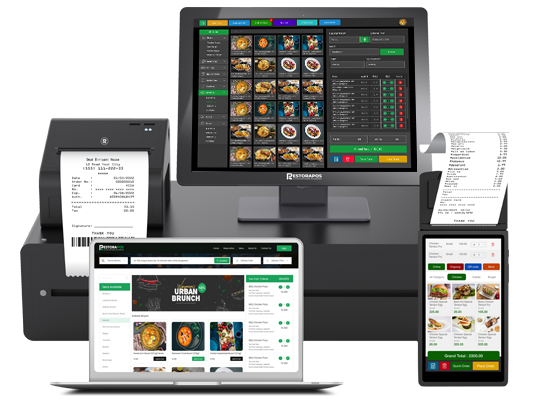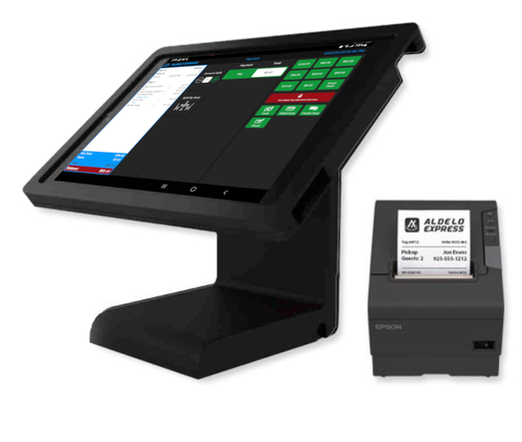Just How POS System Functions: A Comprehensive Guide for Entrepreneur
A POS system acts as a crucial tool for contemporary companies, integrating different elements to improve operations. It includes hardware like barcode scanners and software offer for sale monitoring. This system not only processes deals but also handles stock and assesses consumer actions. Recognizing its functionality can considerably influence a company's efficiency and decision-making. What are the essential elements that add to this effectiveness? Exploring these components offers beneficial understandings.
Recognizing the Parts of a POS System
A Point of Sale (POS) system is composed of several key components that work with each other to assist in deals and manage organization procedures. At its core, the hardware includes gadgets such as a money register, barcode scanner, invoice printer, and payment terminal, all crucial for refining sales (Restaurant POS Software). The software application component takes care of stock, sales monitoring, and client data, supplying useful insights for organization decisions.Additionally, databases save deal records and customer details, making certain information stability and safety and security. Network connection makes it possible for real-time updates and access to cloud-based services, enhancing functional performance. Interface, made for convenience of use, enable personnel to navigate the system quickly, minimizing training time. Together, these parts produce a natural system that improves the sales procedure, improves customer support, and help in reliable management of service sources. Comprehending these elements is essential for company owner looking for to enhance their POS systems
Exactly How Sales Transactions Are Refined
When a client determines to make a purchase, the sales deal launches a collection of systematic steps within the POS system. First, the cashier inputs the things being acquired, which are scanned with a barcode viewers or manually gone into. This action gets product details, consisting of pricing and suitable taxes, from the system's database.Next, the customer is provided with the total quantity due. The POS system after that refines the payment, whether with money, bank card, or mobile repayment approaches. For electronic payments, the POS securely communicates with payment cpus to license and confirm the transaction.Once the payment is verified, the system creates a receipt, which can be published or sent electronically. This invoice works as evidence of purchase for the client. Ultimately, the purchase data is tape-recorded in the system, making sure accurate sales documents and monetary monitoring for business.
Supply Monitoring and Monitoring
Reliable supply administration and monitoring are important elements of a POS system, as they assure that services preserve optimal stock degrees and decrease disparities. A robust POS system allows for real-time inventory updates, mirroring sales and returns immediately. This enables organization owners to check stock levels properly, making sure that popular items are conveniently available while avoiding overstocking of much less preferred our website products.Additionally, progressed POS systems provide functions such as computerized stock alerts and reorder tips, improving the procurement procedure. Barcoding and RFID innovation improve accuracy in tracking inventory activity, minimizing human mistake. Considerable coverage devices provide insights into stock turn over rates, aiding businesses make educated choices regarding acquiring and item offerings. Ultimately, efficient supply management through a POS system not only improves functional efficiency but likewise improves consumer complete satisfaction by making certain product availability.

Evaluating Consumer Information and Insights
Client information evaluation acts as an effective device for organizations making use of a POS system. By accumulating and examining transaction information, businesses can uncover valuable understandings concerning client actions and preferences. This analysis allows them to identify buying fads, peak purchasing times, and preferred products, thus educating inventory decisions and advertising and marketing read strategies.Additionally, businesses can sector their consumer base, permitting customized advertising and marketing initiatives that deal with certain demographics or purchasing habits. Recognizing consumer loyalty patterns also helps in creating targeted promos and rewards programs.The information amassed from a POS system can additionally disclose insights into consumer comments, enabling organizations to make educated decisions pertaining to item offerings and service renovations. Eventually, leveraging customer data successfully can boost the total buying experience, foster client contentment, and drive income growth.
Advantages of Carrying Out a POS System
Implementing a POS system provides countless advantages that can substantially enhance company procedures. To start with, it improves deal processes, decreasing wait times and enhancing customer fulfillment. By automating sales processes, companies can decrease human error and guarantee accurate record-keeping. Furthermore, a POS system supplies beneficial data analytics, making it possible for owners to track sales trends and stock levels in real-time. This understanding sustains notified decision-making, helping to maximize supply monitoring and advertising strategies.Moreover, several POS systems integrate with various other organization tools, such as accounting software program, streamlining financial management. Enhanced employee management features, such as tracking hours and performance, further add to functional efficiency.Lastly, the application of a POS system can bring about raised earnings via boosted client experiences and calculated insights, eventually promoting company growth and sustainability.
Regularly Asked Inquiries
What Kinds of Services Can Gain From a POS System?

Just how much Does a POS System Typically Expense?
The cost of a POS system commonly varies from additional info a couple of hundred to a number of thousand dollars, depending on features, equipment, and software program - Restaurant POS Software. Services must consider continuous charges for upkeep, support, and deal processing when budgeting

Can I Incorporate a POS System With Existing Software?
Integrating a POS system with existing software application is often possible. Several systems supply APIs or built-in compatibility attributes, permitting organizations to enhance operations and boost capability by linking different software program applications effectively.
What Training Is Required for Personnel to Make Use Of a POS System?
Training for staff to make use of a POS system commonly consists of understanding software functionalities, refining deals, managing inventory, and taking care of consumer interactions - Restaurant POS Software. Practical presentations and hands-on practice sessions enhance effectiveness and confidence in using the system effectively
What Takes place if the Internet Drops While Using a POS System?
If the net drops throughout POS system use, deals might be disrupted. Many systems offer offline capabilities, allowing basic procedures to proceed, however full functionality, including real-time stock updates, will certainly be restricted.